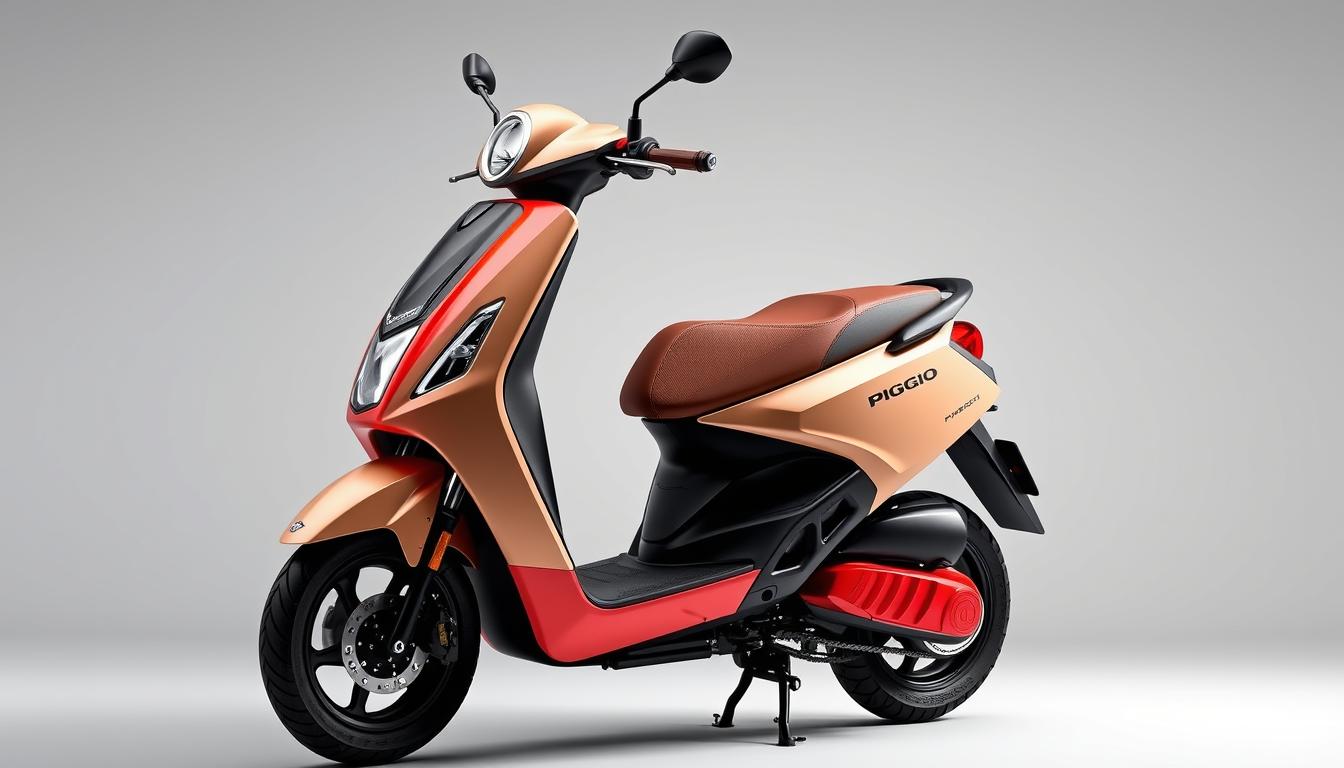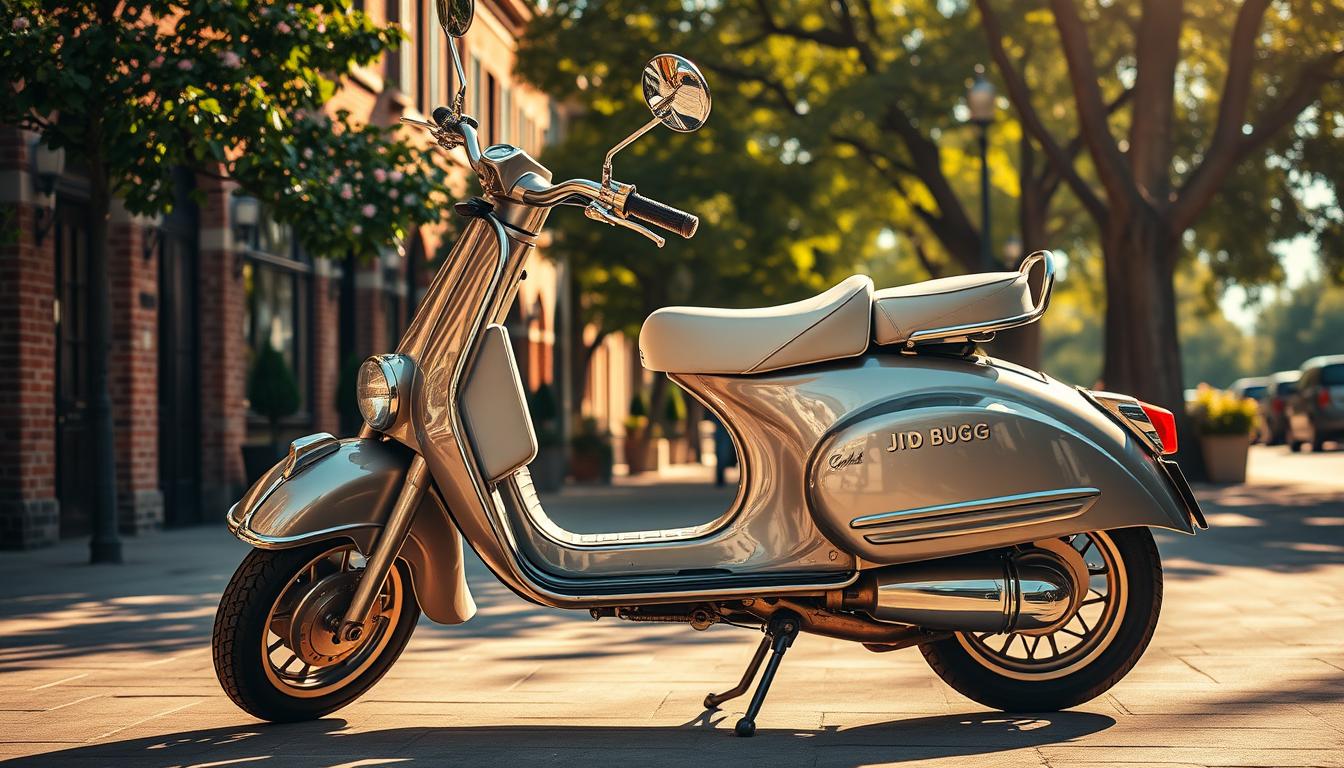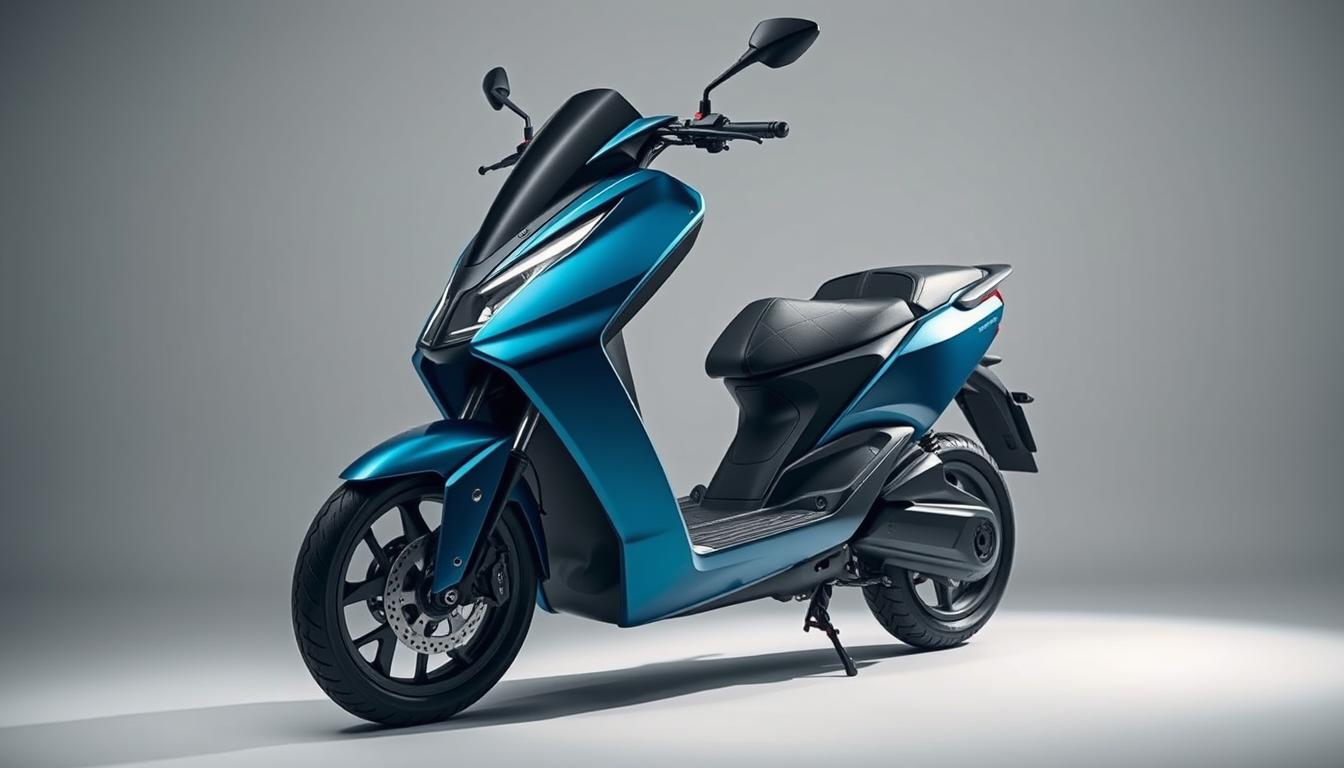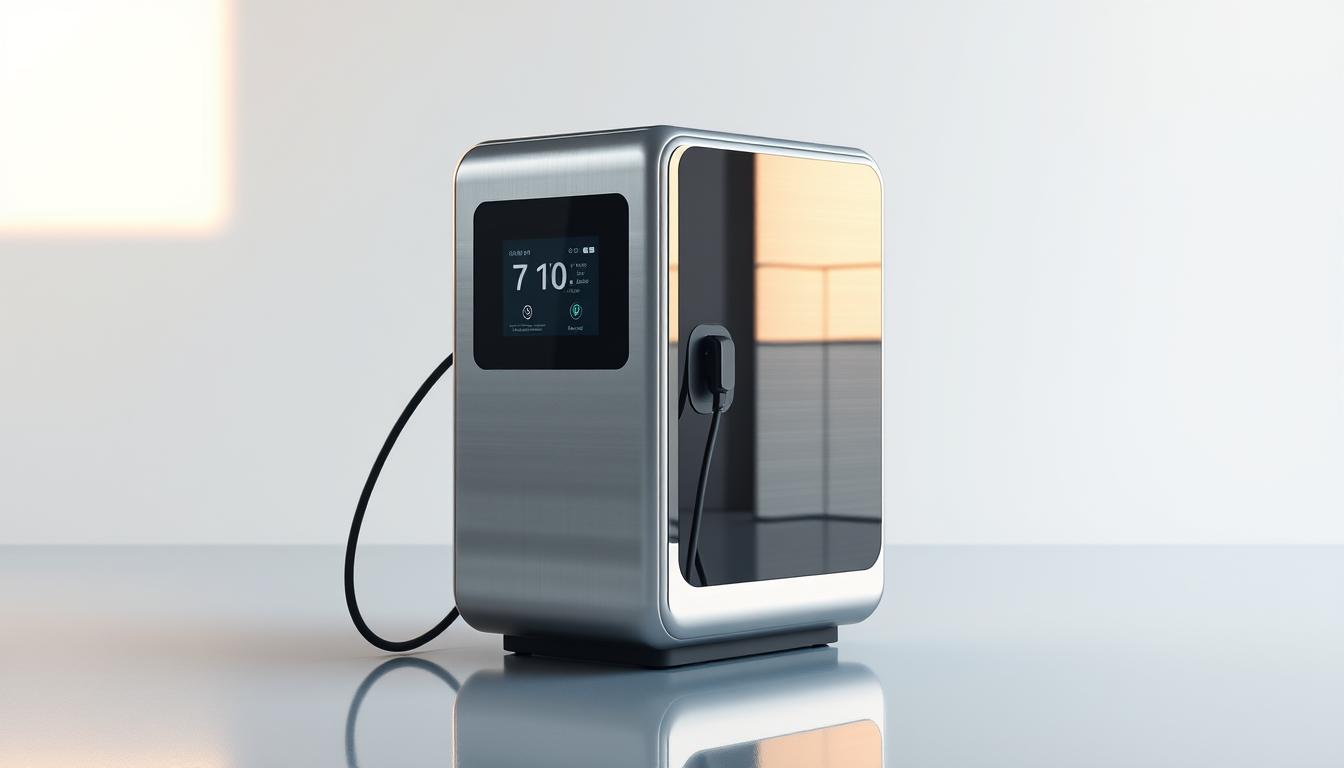
Used Scooters Near Me: Top Models & Savings
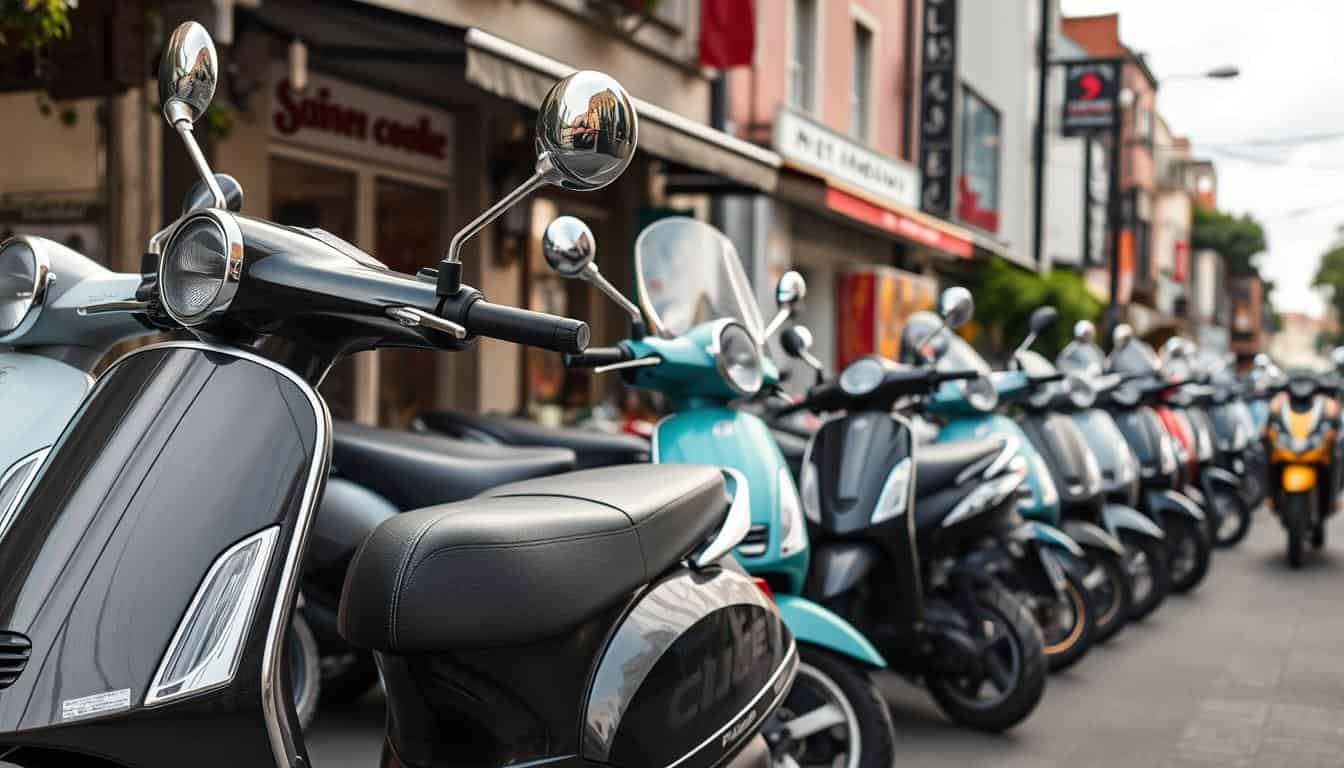
City dwellers are increasingly turning to budget-friendly transportation options. Pre-owned two-wheelers offer a smart solution, combining affordability with eco-conscious benefits. Riders can save 30-50% compared to buying new while still getting reliable performance.
Popular models like the Honda Metropolitan and Vespa Primavera lead the market with their durability and style. Many dealerships now feature updated inventory lists, making it easier to find quality options locally.
Choosing second-hand means less depreciation and lower environmental impact. It’s a practical way to navigate urban streets without breaking the bank. With proper maintenance, these vehicles provide years of efficient service.
Why Choose Used Scooters Near Me?
Smart commuters are discovering the unbeatable value of pre-owned two-wheelers. These vehicles offer a perfect blend of reliability, style, and savings, making them ideal for urban travel. With their cost-effectiveness and eco-friendly nature, pre-owned two-wheelers are becoming a popular choice among city dwellers. Additionally, the yume scooter features for commuters enhance the travel experience, offering advanced technology and comfort without breaking the bank. This makes them not only a smart choice financially but also a practical one for navigating crowded urban environments.
Affordability Without Compromising Quality
Buying second-hand cuts costs by 50% or more. A new model might cost $3,500–$6,000, while pre-owned options range from $1,500–$3,000. Many dealers offer certified refurbishment programs, ensuring like-new condition.
Brands like Vespa prove durability matters. Their 70-year legacy shows how well-built scooters last decades. With proper care, even older models deliver smooth rides.
Eco-Friendly and Cost-Efficient Transportation
These vehicles average 100+ MPG, slashing fuel expenses. EPA data reveals they emit 75% fewer pollutants than cars. That’s a win for wallets and the planet.
Riders reduce their carbon footprint while dodging traffic. It’s a practical choice for short commutes or weekend adventures.
Top Used Scooter Models to Consider
Several standout options dominate the second-hand market for their proven performance. These models combine reliability with distinctive features that cater to different riding needs. Smart buyers prioritize units with strong maintenance histories and available replacement parts.
Honda Metropolitan: Reliable and Stylish
The Honda Metropolitan earns Consumer Reports’ 5-year reliability rating, a rare feat in its class. Its fuel-injected 49cc engine delivers smooth acceleration perfect for city streets. Retro-inspired designs maintain resale value better than many competitors.
Owners report reaching 20,000+ miles with basic upkeep. Honda dealerships stock OEM parts nationwide, simplifying repairs. This model suits riders prioritizing hassle-free ownership above raw power.
Vespa Primavera: Classic Design, Modern Performance
Post-2018 Primavera models feature upgraded 155cc i-get engines with improved fuel efficiency. The steel unibody frame withstands urban potholes while maintaining that iconic Italian silhouette. Tech upgrades include USB ports and LED lighting.
These scooters hold value exceptionally well, often commanding 70% of original MSRP after three years. Vespa’s certified pre-owned program includes 12-month warranties at participating dealers.
Yamaha Zuma: Rugged and Durable
Built for adventure, the Yamaha Zuma boasts 14-inch knobby tires that handle light off-road trails. Its 125cc liquid-cooled engine provides ample torque for hills or cargo loads. The under-seat storage fits a full-face helmet with room to spare.
Commercial delivery fleets frequently use these workhorses, proving their long-term durability. Many units surpass 25,000 miles when serviced regularly. Yamaha’s dealer network offers affordable maintenance packages.
Each of these pre-owned options delivers distinct advantages for different riders. Comparing mileage records and service histories ensures buyers get the best value.
Where to Find Used Scooters Near Me
Finding quality pre-owned two-wheelers requires knowing where to look. Buyers have three primary options, each with unique advantages. Research and preparation ensure the best value and safety.
Local Dealerships with Certified Pre-Owned Options
Authorized dealers offer refurbished models with warranties, often covering 90 days or more. Their featured inventory includes inspected units with service records. Search within a 25-mile radius for the freshest selections.
Perks like free first maintenance or roadside assistance add value. Check BBB ratings and customer reviews before visiting. Certified programs often include multi-point inspections and title verification.
Online Marketplaces for Wider Selection
Sites like Cycletrader.com alert buyers to local price drops and new listings. Filters help narrow options by mileage, price, and model year. Always compare listings with dealership prices for benchmarks.
- Set alerts for specific brands (e.g., Honda, Vespa).
- Verify seller ratings and return policies.
- Request videos of the engine running before committing.
Private Sellers: Tips for Safe Transactions
Facebook Marketplace and Craigslist can yield deals but require caution. Meet at DMVs or police stations to verify VINs and test rides. Ask for maintenance receipts and a bill of sale.
Red flags include vague descriptions or refusal to share paperwork. Trustworthy sellers provide clear photos of the odometer and vehicle identification number. A prepurchase inspection by a mechanic is worth the small fee.
How to Inspect a Used Scooter Before Buying
Smart buyers know that thorough inspections make all the difference when purchasing pre-owned two-wheelers. A careful check of critical components ensures reliability and avoids costly repairs later. Follow these steps to evaluate a model like a pro.
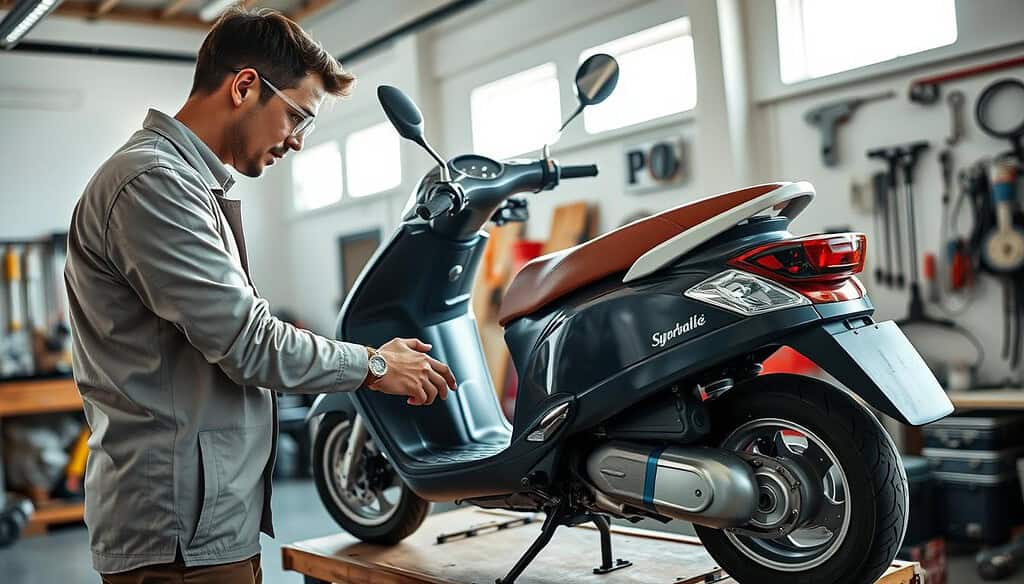
Checking the Engine and Mileage
Always start with a cold engine. A warm unit might hide starting issues. Check the oil dipstick—dark or gritty oil suggests poor maintenance.
Look for consistent mileage records. High-mileage Honda or Vespa models can still be solid if serviced regularly. Listen for unusual knocks or rattles during idle.
Inspecting Tires, Brakes, and Suspension
Tires should have visible tread grooves and no cracks. Avoid rubber older than five years—check the DOT date code on the sidewall.
Brake pads under 3mm (front) or 2mm (rear) need replacement. Test the suspension by pressing down on the handlebars—bouncing more than twice indicates worn shocks.
Test Riding: What to Listen and Feel For
During a test ride, accelerate to 35 MPH. Listen for chain whine or engine strain. Vibrations in the handlebars may signal alignment issues.
- Check braking responsiveness on a safe, flat surface.
- Note any pulling to one side, which could mean tire or frame damage.
- Ensure the throttle responds smoothly without delays.
These steps help spot problems before they become your problems. A trusted mechanic’s inspection is worth the small fee for peace of mind.
Unbeatable Savings on Used Scooters
Savvy shoppers recognize the financial benefits of choosing pre-owned rides. Strategic timing and market knowledge help secure the best deals. Buyers often save thousands while still getting dependable performance.
Depreciation: Why Pre-Owned Options Are a Steal
New models lose 20-30% of their value in the first year. Brands like Honda or Vespa hold value better, but buying second-hand avoids this steep drop. This means more features for less money.
Northern states see 15% price dips from October to March. Dealers clear inventory before winter, creating prime bargaining opportunities. Holiday promotions often include free accessories or extended warranties.
Seasonal Discounts and Promotions
End-of-year sales align with dealer quotas, unlocking extra discounts. Some states exempt pre-owned vehicles from sales tax, adding to savings. Insurance costs average 25% lower compared to new models.
- Compare prices across multiple dealerships to leverage matching offers.
- Ask about certified refurbishment programs for added peace of mind.
- Check for hidden fees like documentation charges before committing.
Financing Options for Used Scooters
Smart financing makes pre-owned two-wheelers even more accessible. Buyers can choose between dealer plans, bank loans, or leasing—each with distinct advantages. Comparing terms ensures the best fit for your budget.
Dealer Financing vs. Bank Loans
Dealerships often offer convenience but higher APRs—averaging 9.99%. Credit unions and banks provide rates as low as 5.99% for qualified buyers. LightStream’s unsecured loans are ideal for private purchases, with no collateral required.
A 20% down payment typically secures the best terms. Credit scores of 650+ unlock prime rates. Always request a full breakdown of fees, including documentation charges.
Leasing a Used Scooter: Pros and Cons
Leasing lowers monthly payments but includes mileage caps (often 5,000–10,000 miles/year). Wear-and-tear clauses may lead to extra fees at lease-end. However, it’s a low-commitment way to test a model before buying.
- Pros: Upgrade easily; minimal upfront costs.
- Cons: No equity buildup; strict return conditions.
Lease-to-own programs exist but require careful review of balloon payments. For long-term savings, traditional loans often outperform leasing.
Essential Accessories for Your Used Scooter
Upgrading your ride with the right accessories enhances both safety and convenience. Whether commuting or cruising, these add-ons protect riders and streamline trips. Investing in quality gear ensures longevity and comfort.
Must-Have Safety Gear
A DOT-certified helmet is non-negotiable. Look for ECE-rated options, which meet stricter European standards. Full-face designs offer superior protection against wind and debris.
Anti-theft devices like the *Kryptonite New York Fahgettaboudit* chain deter thieves. Pair it with a disc brake lock for layered security. Riders should also consider:
- Reflective vests or decals for visibility.
- Gloves with grip reinforcement.
- Waterproof jackets for sudden weather changes.
Storage Solutions for Scooters
The *Givi Monolock 35L* top case is a game-changer. Its water-resistant design fits groceries or a full-face helmet. For phones, the *Quad Lock* mount reduces vibration damage.
Winter prep is critical. Use fuel stabilizer (1 oz per 2.5 gallons) and a battery tender. Cover the vehicle with a breathable tarp to prevent moisture buildup.
With these upgrades, every ride becomes safer and more efficient. Smart accessories pay for themselves in peace of mind.
Maintaining Your Used Scooter for Longevity
Proper care keeps pre-owned rides running smoothly for years. Regular maintenance prevents breakdowns and preserves resale value. Follow these key steps to ensure peak performance.
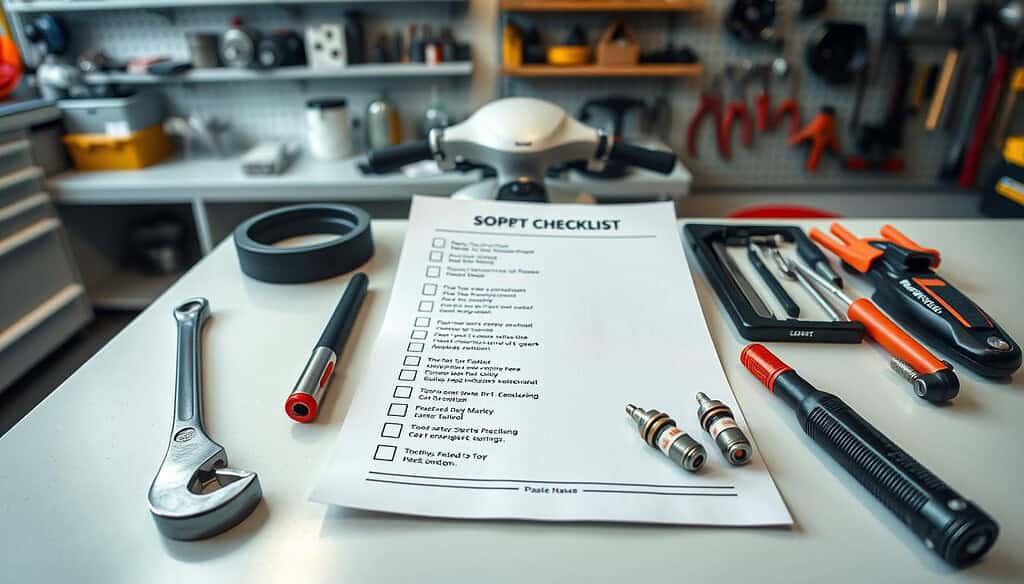
Regular Oil Changes and Fluid Checks
Conventional oil needs replacement every 1,500 miles, while synthetic lasts up to 3,000 miles. Dark or gritty oil signals overdue service. Check coolant every 2 years or 4,000 miles—low levels cause overheating.
Carburetor cleaning costs $120–$180 at independent shops. Clogged carburetors lead to rough idling. Always use manufacturer-recommended fluids for optimal engine life.
Battery Care and Winter Storage Tips
Yuasa batteries last longer with monthly trickle charging. Corroded terminals reduce efficiency—clean them with baking soda paste. For winter storage:
- Inflate tires to 40 PSI to prevent flat spots.
- Wax metal parts to shield against rust.
- Add fuel stabilizer to prevent gummed-up lines.
A breathable cover protects against moisture without trapping condensation. These steps ensure easy spring startups.
Negotiating the Best Price on a Used Scooter
Knowledge is power when haggling for a quality second-hand vehicle. Smart buyers combine research with polite persistence to secure unbeatable deals. These strategies work equally well with dealers and private sellers.
Researching Fair Market Value
The NADA Guides provide accurate valuations for models post-2010. Compare listings within 50 miles to spot inflated prices. Visible dents typically justify $75-$150 discounts per imperfection.
Contact sellers on Thursday evenings when they’re more receptive to offers. Dealerships calculate trade-ins at wholesale prices—know your bike’s retail value first. Always focus on the out-the-door price to avoid document fee surprises.
Politely Haggling Without Offending Sellers
Start with facts: “I see comparable models averaging $2,300—would you consider $2,100?” Highlight maintenance records as leverage. If they decline, ask what price would work.
- Bundle requests: “$2,400 with the helmet and lock?”
- Use silence—many sellers fill pauses with concessions
- Walk away politely if needed; 80% of sellers follow up
With these tactics, riders routinely save 12-18% off asking prices. Patience and preparation pay dividends.
Used Scooters vs. New: Which Is Right for You?
Deciding between pre-owned and new models requires careful consideration of budget and needs. Riders must weigh upfront costs against long-term benefits, from warranties to resale potential. Each option suits different priorities, whether affordability or cutting-edge features.
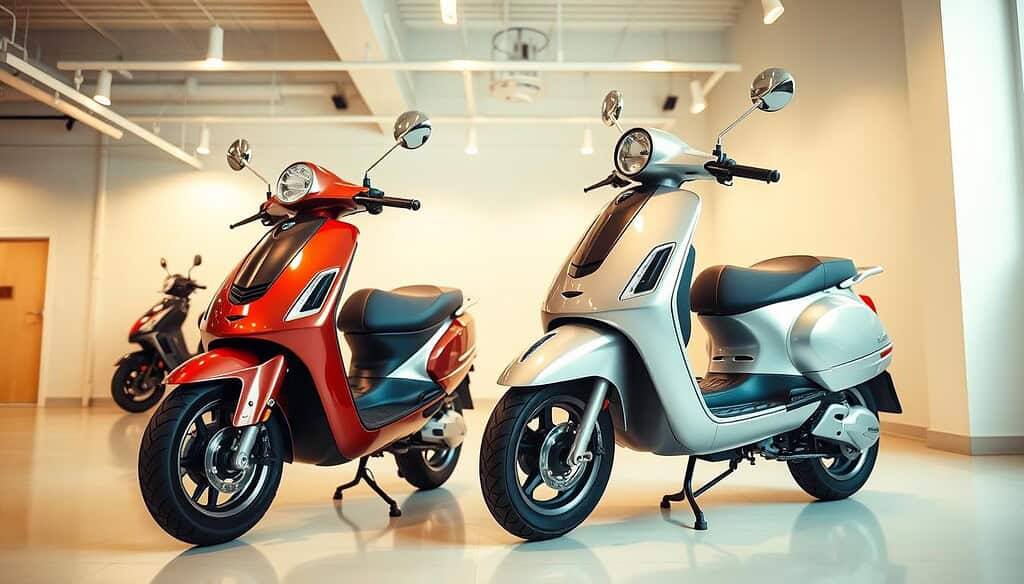
Cost-Benefit Analysis
A three-year ownership comparison reveals stark differences. Pre-owned models save 40–60% upfront, but lack the 2-year warranties common with new purchases. Brands like Honda retain 60% value after 3 years, softening depreciation hits.
Newer tech, like ABS brakes, often justifies higher prices for safety-conscious riders. Electric models are exceptions—battery degradation makes pre-owned options riskier. Always factor in insurance and maintenance for a true break-even analysis.
When Splurging on New Makes Sense
New purchases shine for riders wanting latest features or custom builds. Dealers offer 0% APR promotions on current-year inventory, reducing financing costs. Niche cases include:
- Tech upgrades: LED displays or traction control.
- Electric models: Full battery warranties (typically 2 years).
- Limited editions: Vespa’s annual color releases hold value.
For urban commuters prioritizing savings, pre-owned remains the smarter choice. Weekend enthusiasts might prefer new for peace of mind.
Popular Brands for Used Scooters in the U.S.
Certain brands stand out in the pre-owned market for their lasting quality and rider satisfaction. Whether prioritizing durability, style, or affordability, these names consistently top buyer lists.
Honda: Trusted for Reliability
Honda models like the Metropolitan shine with 300-mile service intervals, making upkeep straightforward. Dealerships ship parts within 24 hours, minimizing downtime. Owners report fewer mechanical issues compared to competitors.
Vespa: Iconic and Timeless
The Vespa LX 150 and Sprint 150 dominate resale markets for their steel frames and retro appeal. 68% of owners repurchase the brand, citing unmatched craftsmanship. Modern upgrades like LED lighting blend classic looks with contemporary tech.
Kymco: Budget-Friendly and Efficient
Kymco’s Agility 125 offers $45 oil changes and 600-mile service gaps, ideal for cost-conscious riders. Though less luxurious, its fuel efficiency rivals pricier options. Parts are widely available at independent shops.
- Honda leads in dealer support, while Kymco wins on affordability.
- Vespa retains value best, often reselling at 70% of original MSRP.
- Compare mileage histories—well-maintained models last decades.
Common Pitfalls When Buying Used Scooters
Navigating the pre-owned market requires awareness of common buyer mistakes. Hidden issues and dishonest sellers can turn a great deal into a headache. A little caution goes a long way.
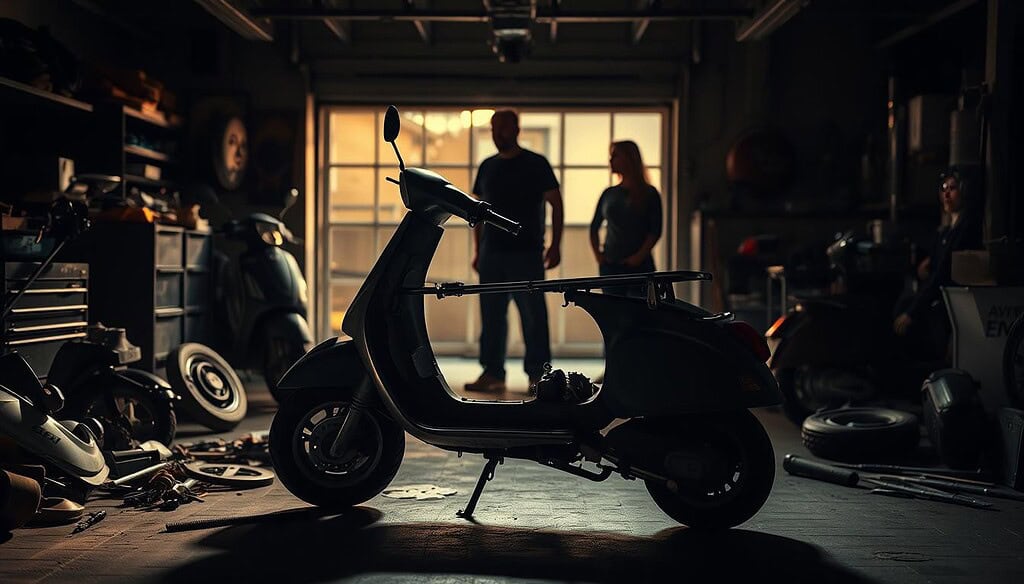
Hidden Damage and Hidden Costs
Salvage titles often mean 40% more repairs. Check for mismatched paint or uneven gaps—signs of past crashes. Flood damage hides under seats; musty smells or rusted bolts are red flags.
Aftermarket parts may void warranties. Always ask for original manufacturer components. Service stickers help verify true mileage if the odometer seems suspicious.
Sketchy Sellers: Red Flags to Watch For
“Cash only” demands or vague paperwork suggest trouble. Trustworthy sellers provide maintenance records and a clear title. Walk away if they refuse a mechanic’s inspection.
- Storage gaps: Long idle periods accelerate engine wear.
- No test rides: Insist on hearing the engine run.
- Pressure tactics: Legit sellers allow time to decide.
Spotting these issues early saves money and stress. Always trust your instincts—if a deal feels off, it probably is.
Best Time of Year to Buy a Used Scooter
Strategic buyers watch the calendar, not just the odometer, to score the best deals. Seasonal trends create predictable price drops, with savings reaching 20-30% during key months. Savvy shoppers plan purchases around these fluctuations.
End-of-Season Sales
September brings clearance events as dealers make room for next-year models. Honda and Yamaha dealerships often slash prices by 15% during this period. Northern states see steeper discounts before winter storage.
The Pacific Northwest offers May deals when rainy weather depresses demand. Coastal buyers can negotiate extra accessories like waterproof covers or heated grips.
Holiday Discounts and Special Offers
Black Friday packages frequently include free helmets or locks with purchase. Some dealers match online retailers’ doorbuster pricing. January announcements about ECU upgrades make older models more affordable.
- Tax return season (March-April) often triggers price increases as demand spikes
- Summer test-ride events may include no-fee financing
- Model year transitions bring certified pre-owned warranties
Tracking these patterns helps riders maximize value. The right timing turns good deals into great ones.
Legal Requirements for Riding a Scooter
Understanding local regulations ensures safe and lawful operation of two-wheeled vehicles. Rules vary significantly by state, covering licenses, safety gear, and insurance. Riders should always verify current laws before hitting the road.
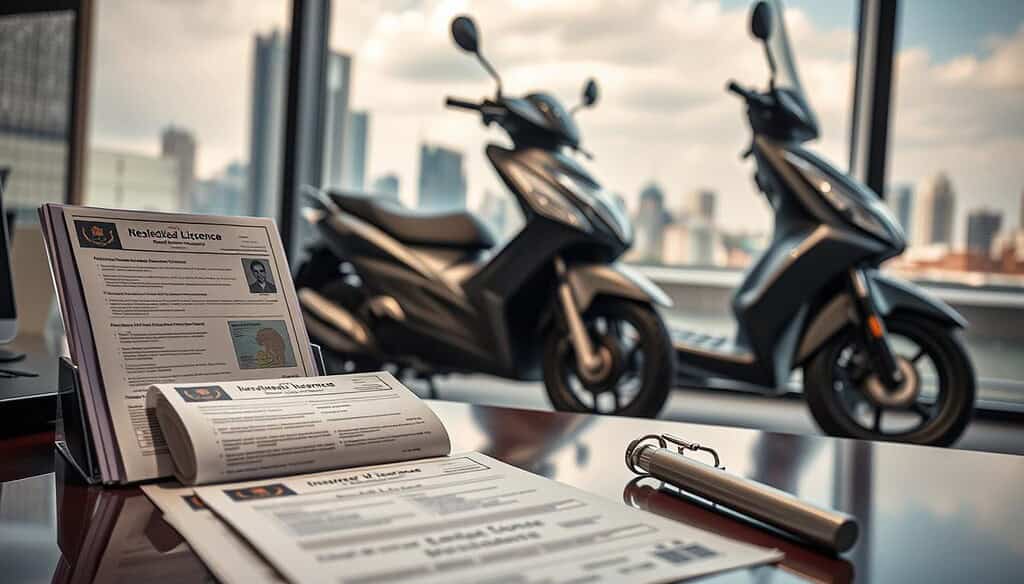
License and Registration Basics
Engine size determines licensing needs in most states. Models under 50cc often require only a standard driver’s license, while larger engines need motorcycle endorsements. Alabama mandates a “B” restricted license for 50cc vehicles, with operators as young as 14 eligible.
Registration fees range from $35-$150 depending on location. Some states like Arizona exempt mopeds from titling. Always carry proof of registration during rides to avoid citations.
State-Specific Scooter Laws
California enforces strict helmet laws for all ages, while Arkansas only requires them for riders under 21. Insurance minimums also differ—Texas follows a 15/30/5 coverage standard for liability.
- Parking rules: Downtown districts often require permits, costing $50-$200 annually.
- CC restrictions: 150cc models typically need full motorcycle licenses.
- Title transfers: Fees vary by state; Alaska charges $15 for titling.
For detailed regulations, check state-specific scooter laws. Staying informed prevents fines and keeps riders protected.
Testimonials: Happy Used Scooter Owners
Owners across America share their success stories with second-hand models. Their experiences highlight the real-world benefits of choosing pre-owned rides—from massive savings to unexpected durability.
Real Stories of Savings and Satisfaction
In Austin, graphic designer Marco switched from car commuting to a refurbished Yamaha Zuma. He now saves $1,200 yearly on parking and gas. “It pays for itself in seven months,” he notes.
Chicago delivery rider Alicia’s 2018 Honda Metropolitan just passed 12,000 miles. “Basic oil changes kept it running perfectly,” she says. The bike handles her 50-mile daily route without issues.
- San Diego student Jordan budgets just $35/month for his Vespa’s maintenance—far less than campus parking permits.
- New York food truck owner Luis added cargo boxes to his used model, doubling delivery capacity for under $300.
- Phoenix retiree Diane’s three-year ownership costs totaled $1,800—less than one car payment annually.
These riders prove smart purchases lead to long-term satisfaction. Their stories showcase how pre-owned models deliver real value.
Start Your Used Scooter Journey Today
Ready to hit the road? Now’s the perfect time to explore affordable two-wheeled rides. Local dealers offer ZIP code tools to check inventory instantly. Pair this with a free inspection checklist to evaluate models like a pro.
Booking a test ride is simple. Call ahead to confirm availability and ask about 30-day guarantees. Many shops provide complimentary first maintenance visits, adding extra value.
Compare total costs—owning a ride often beats monthly transit passes. With the right prep, riders save thousands while enjoying the open road. Your adventure starts now.
FAQ
Why should someone consider buying a pre-owned scooter?
Pre-owned models offer significant savings while still providing reliable performance. They’re also an eco-friendly choice, reducing waste and fuel costs.
What are some trusted brands for second-hand scooters?
Honda, Vespa, and Yamaha are popular for their durability and style. Kymco is another great option for budget-conscious buyers.
Where can people find reliable pre-owned scooters locally?
Local dealerships often have certified options, while online platforms like Craigslist or Facebook Marketplace offer a wider selection. Always verify the seller’s credibility.
What should buyers check before purchasing a pre-owned scooter?
Inspect the engine, tires, brakes, and suspension. A test ride helps spot unusual noises or handling issues.
Are there financing options for pre-owned scooters?
Yes, many dealerships offer financing. Banks and credit unions also provide loans, often with competitive rates.
How can buyers negotiate a fair price?
Research market values beforehand and approach negotiations politely. Pointing out minor flaws can help lower the price.
What are common mistakes to avoid when buying?
Skipping inspections, ignoring maintenance records, or dealing with unverified sellers can lead to costly issues.
When is the best time to buy a pre-owned scooter?
End-of-season sales and holiday promotions often bring the best deals, especially in fall or winter.
What legal requirements apply to riding a scooter?
Most states require a valid license, registration, and sometimes a helmet. Laws vary, so check local regulations.
How can owners maintain their scooter for longevity?
Regular oil changes, battery checks, and proper winter storage keep it running smoothly for years.

